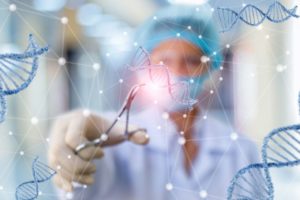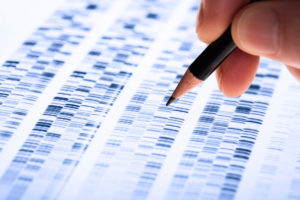When Rylae-Ann was one year old, her parents had to hold her in an upright position at night in order for her to breathe. Rylae-Ann had a rare genetic disease, aromatic l-amino acid decarboxylase deficiency (AADC) that prevented her from even lifting her head.
Rylae-Ann and her parents, who live in Bangkok, were contacted by her uncle after he read about a child in Taiwan with the deficiency. About 135 children worldwide have this disorder and many of these children live in Taiwan. AADC is a disorder that disrupts communication between cells in the nervous system.
Rylae-Ann’s mother Judy Wei and father Richard Poulin, III found a doctor in Taiwan who gave an accurate diagnosis. This qualified Rylae-Ann to be one of the first recipients of a new way to deliver gene therapy.
The United Kingdom and Europe had just approved a drug that delivers gene therapy directly to the brain. In the U.S., PTC Therapeutics, which is based in New Jersey, will apply for FDA approval later this year.
Rylae-Ann is now four years old and has made a remarkable recovery. She swims, rides horses, runs, and participates in so many of the activities that her parents never thought possible.
The Race is On
Currently, according to the NIH, there are about thirty studies in the United States that are testing gene therapy. Dr. Krystof Bankiewicz at the University of Ohio is also working on therapies for AADC deficiency while researchers are studying the effect of the therapy on other disorders such as Parkinson’s, Huntington’s, and Alzheimer’s.
Admittedly, there are many challenges ahead, such as diseases that are the result of more than one gene. However, scientists remain undaunted because the evidence is mounting in favor of this new discovery.
Rylae-Ann’s transformation was perhaps one of the most dramatic breakthroughs. In November 2019 the child was eighteen months old when she underwent the treatment.
Judy and her husband were concerned but weighed the risks against their child not surviving without the therapy.
The treatment is minimally invasive, with a thin tube inserted into the skull. A harmless virus delivers a functional version of the gene.
AACD involves mutations in a gene that helps to create an enzyme that develops neurotransmitters such as serotonin and dopamine. These enzymes are called the body’s chemical messengers.
Stuart Peltz, PTC Therapeutics CEO, explained that the treatment enters the brain cells where the cells create dopamine, a neurotransmitter. Other officials at the company commented that cognitive and motor improvements were seen in all clinical trial patients. The improvements were ongoing.
Dr. Bankiewicz reported on forty of his own patients that participated in an NIH-funded study that saw vast improvements. The doctor’s surgical procedure is somewhat more complicated as it is directed at the brain’s relevant circuits.
One of Dr. Bankiewicz’s patients is Rian Rodriguez Pena, who lives with her parents in Toronto. Rian received the new therapy in 2019 just before she turned five years old. Two months after her therapy, Rian was able to lift her head up. Later she began to use her hands and within seven months, she sat up unaided.
There are admittedly many challenges facing the research teams. It is important to identify the disease as early as possible to avoid the many problems that can arise over the years.
Scientists are now working on alternate methods of delivering gene therapy to the brain without the risk of brain surgery.
The issue of cost is another factor. A one-time PTC therapy, Upstaza, costs over $3 million in Europe. To date, these costs have been taken up by governments and insurers. Nonetheless, drugmakers and researchers are committed to ensuring that patients receive needed treatment.
Both Rian and Rylae-Ann are doing well and their parents hope that other families will be able to receive this life-saving therapy.
Read more about this story here.








